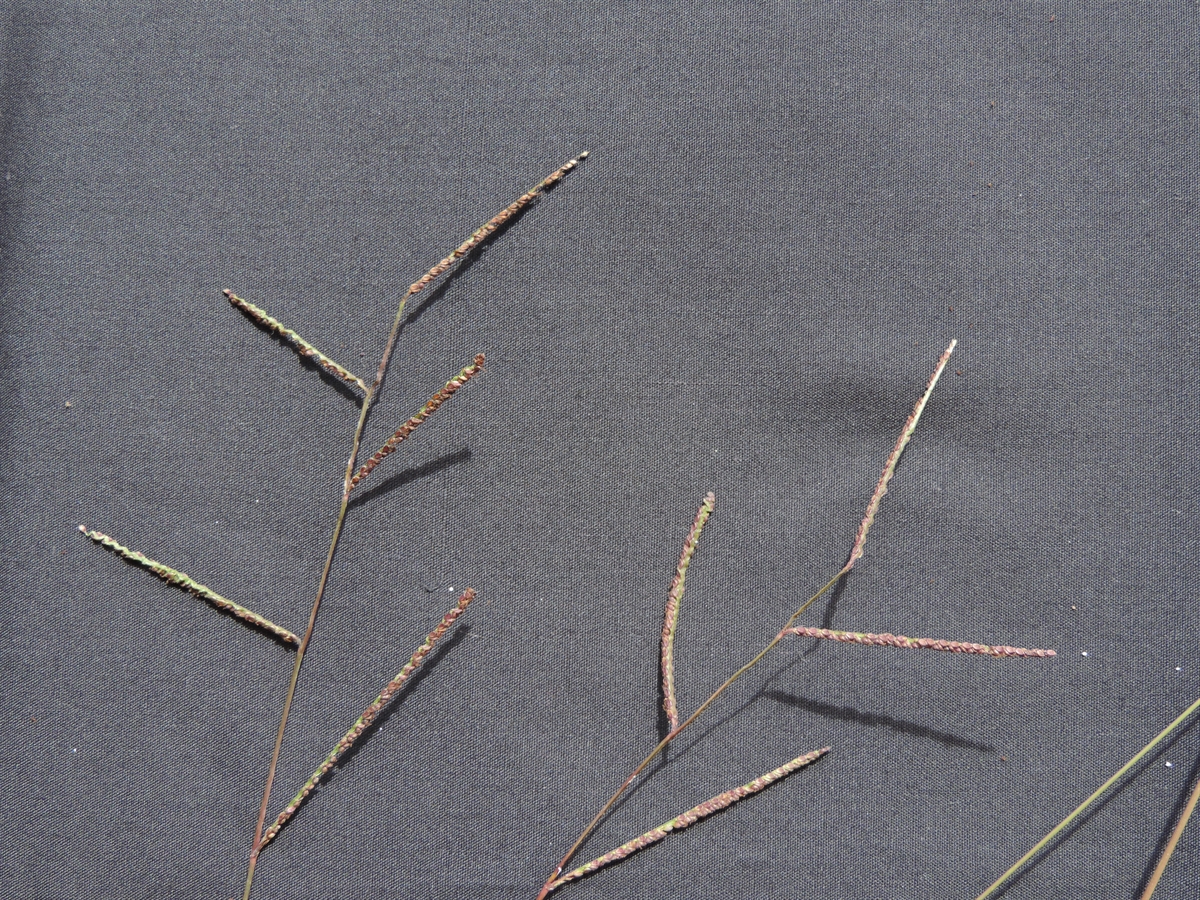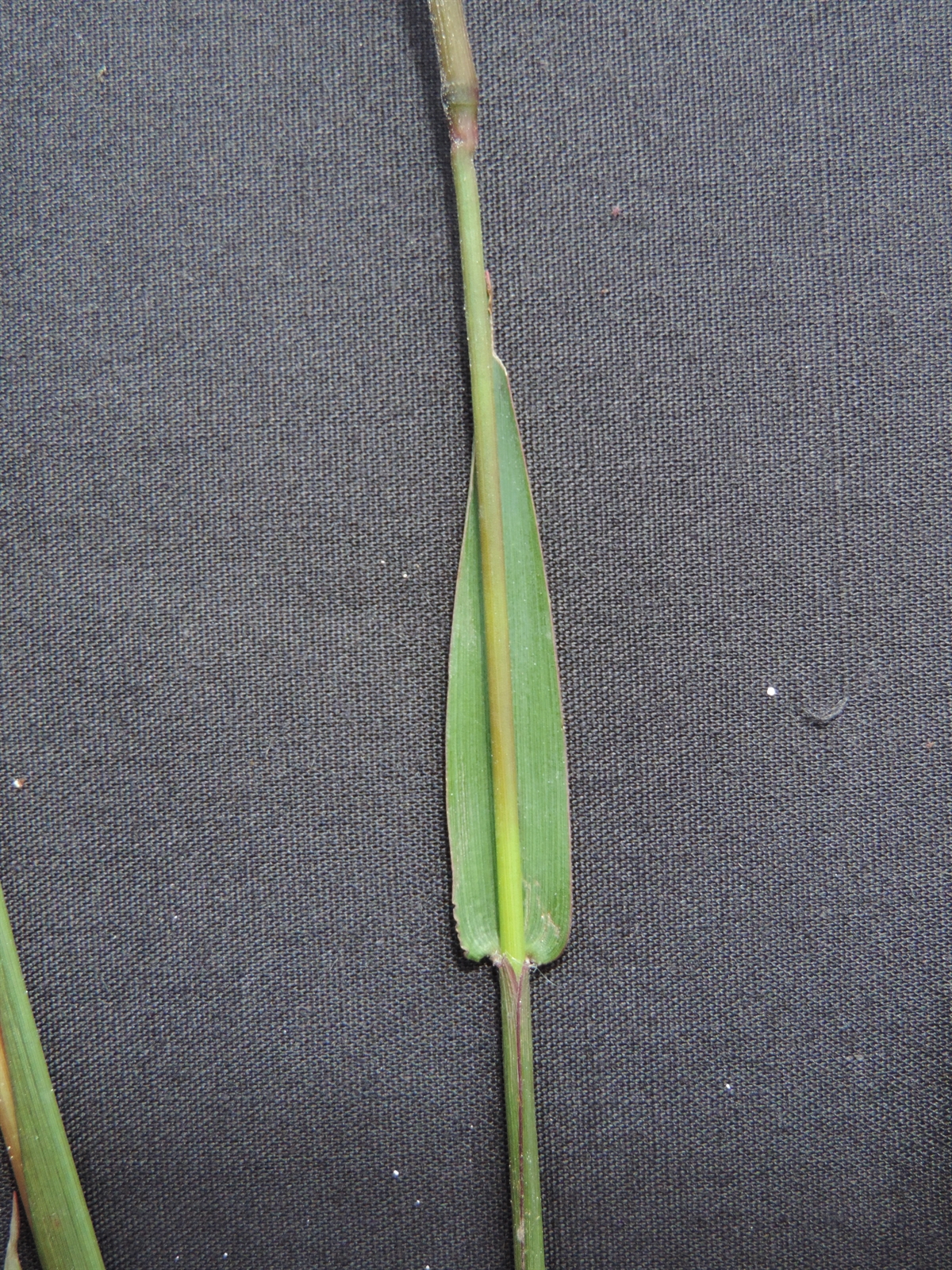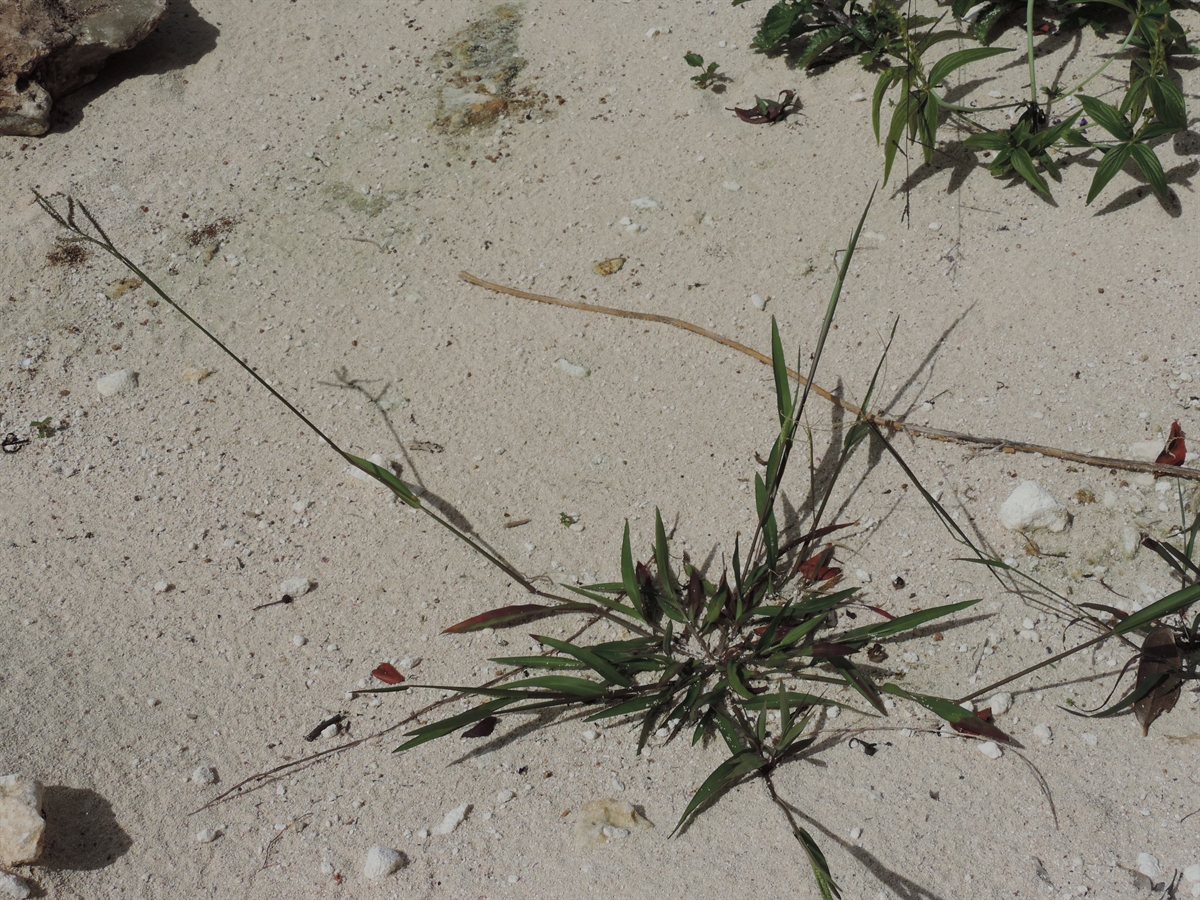Habit: Paspalum blodgettii grows as clumping perennial to 100 cm in height when flowering. The leaves are arranged alternately to 25 cm in length (usually shorter) with a basal sheath extending along the stem that is slightly pubescent. At the point of divergence of the leaf sheath to the leaf blade is a membranous ligule. The leaves are parallel veined and the base of the leaf blade margin has cilia.
The zygomorphic flowers are arranged in a panicle of 3-8 racemes made of appressed spikelets that are glandular pubescent. At the base of each spikelet are 2 structures called glumes. The first glume small and the second larger. In each spikelet there are flowering structures each is subtended by 2 additional structures (lemma and palea). There are two florets with the lower one sterile and reduced while the upper fertile with 1 stamen and a superior ovary each with a single locule and seed. The fruit is a caryopsis.
Habitat: Paspalum blodgettii grows in Pine Woodlands and Human Altered environments (yard, old fields).
Distribution: Paspalum blodgettii occurs through the island groupings in the Lucayan Archipelago, the Greater Antilles, Central America, and Florida.
Medicinal/Cultural/Economic usage: Paspalum blodgettii is not known to be used medicinally in the Lucayan Archipelago.



